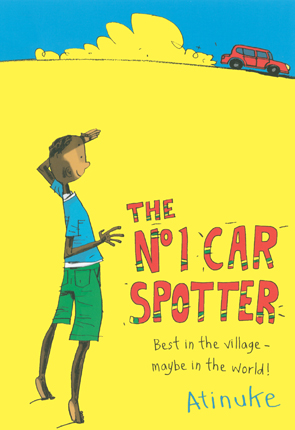Full Text Reviews: Booklist - 10/01/2011 Oluwalase knows about African cities with skyscrapers and about smaller towns with electricity, running water, and TV, but in his poor village in the bush, they “only talk about such things.” Living near the main road, he has learned from Grandfather how to spot fancy cars speeding toward the cities, and he is thrilled when a Toyota Corolla breaks down and is abandoned nearby. Then, when the village wagon falls apart, he figures out how to use the Toyota to get the villagers’ goods to market, where they trade their palm oil, yams, and rice for necessities such as salt, sugar, kerosene, pens, and shoes. With a wry blend of realism, farce, and heartbreak, Nigerian-born Atinuke’s small chapter book, illustrated with spare line drawings, tells a contemporary story of a kid who saves the day. Readers will be hooked to the end as tension rises and there is no way to get Grandmother medical care––until, once again, Oluwalase shows that he is number one. - Copyright 2011 Booklist. Bulletin for the Center... - 11/01/2011 illustrated by Warwick Johnson Cadwell Nigerian-born author Atinuke, author of a series of books about Anna Hibiscus, returns to the topic of life in a small African village in this irresistible outing with a new protagonist. Our hero, Oluwalase Babatunde Benson, is known to one and all as No. 1 because he is “the No. 1 car spotter in the village, maybe in the world!” Four chapters, each with a self-contained plot, chronicle No. 1’s adventures as he uses his automotive knowledge to solve the problem of the village’s broken cart, goes to market with his family, helps out his friend at his mother’s food stand, and contributes to the effort to get his ailing grandmother to a doctor in the city. Atinuke has a Beverly Cleary–esque gift for depicting daily-life details with both humor and authenticity. No. 1’s narration is absolutely awash in likability, with a boy’s-eye view of lively village life (when his best friend, Coca-Cola, obediently leaps into action at his mother’s commands, No. 1 reports, “As I was an able-bodied boy in the vicinity of a shouting mama I started to run around as well”) that’s as relatable as it is funny. Plotting is solid in its own right, whether in the comedy of No. 1’s panic at having to buy mysterious grown-lady stuff from a market stall or the gentle emotional dilemma of his wanting to help his friend but not be identified merely as his sidekick; particularly touching is the guilt he feels when he thinks his family has misused the gift of a village visitor. Beyond all that, however, is the author’s exuberant style, which makes No. 1’s joyous voice into one that could turn a walk to the corner into a high-spirited adventure, and which gives the dialogue of family and village the pacing and rhythm of a musical as everybody in the crowd weighs in on everything. Even readers half a world away will feel instantly at home in No. 1’s village, and they’ll relate to universal dynamics such as the authority of grandparents and loyalty to friends. Yet the picture is also rich with details of the area: the goods the village brings to market (“our palm oil and our yams, our onions, our tomatoes and our chili peppers, our baskets and our dried fish . . .”), the enticement of car-spotting in a place where cars are pretty rare, and the difference between the towns, where they have “tap water, electricity, and television,” and the village, “where we only talk about such things.” Nor is this simply a bland travel-brochure portrait: there’s matter-of-fact acknowledgment that the men have all gone to the city to make money, which they send back to their families, and that the money needed for a doctor is more than the village can generally manage. Mostly, though, it’s the story of one effervescent kid and his friends and family, a group whose exploits are ripe for reading aloud or alone. Black-and-white illustrations fill the pages, occupying roughly half of most spreads, making the book even more accessible, and accentuating the inviting energy. The narrow slashes of linework and stylized faces have a distant kinship to Gregory Christie, while the art’s comic flair recalls the work of Ramona illustrator Alan Tiegreen. Ramona herself would certainly find a kindred spirit in No. 1, and her fans—and any kid looking for a flavorful series of adventures worth the effort even for novice readers—will take No. 1 to their hearts. (See p. 134 for publication information.) Deborah Stevenson, Editor - Copyright 2011 The Board of Trustees of the University of Illinois. Loading...
|



